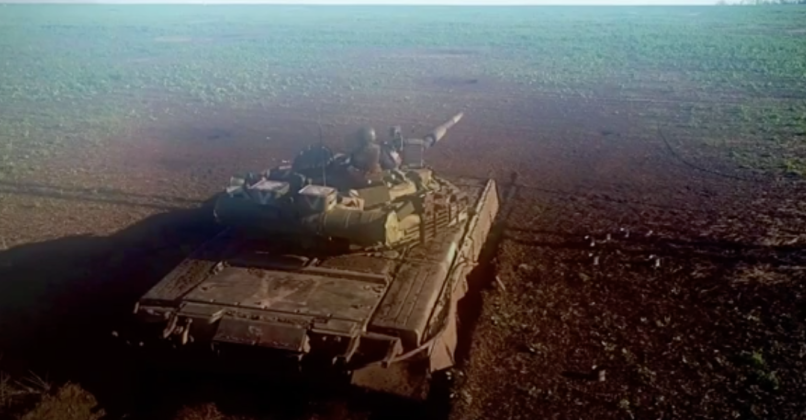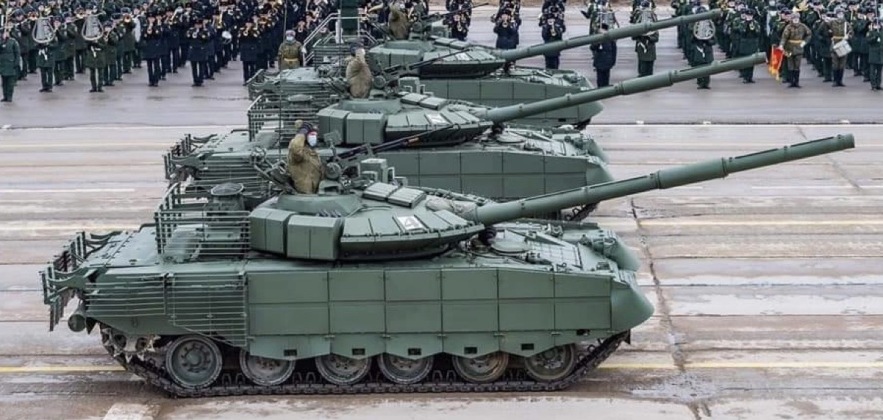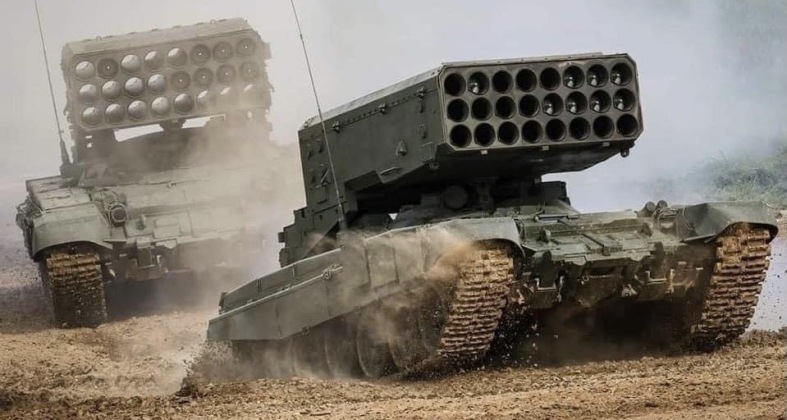Russian Defense Minister Sergei Shoigu visited the country’s Omsktransmash (Omsk) on June 17 to oversee the implementation of defense orders, and the Ministry of Defense reported that he: “has inspected at a factory in the Omsk region Specialized production of tanks and heavy flamethrower systems in accordance with the implementation of the defense order.” Shoigu stressed the importance of further expanding the production capacity of Russian tanks and heavy flamethrower systems, which are based on the T-72 The chassis of the tank, and informed the administration of an unnamed factory that the defense order must be fulfilled strictly on time. The minister further emphasized that special attention must be paid to increasing the protection of the crew, which is in line with the increasing level of armor protection of the new generation of Russian tanks that will be deployed starting in the second half of 2022. Shoigu further checks that the Omsk state hardware is being prepared to be dispatched to front-line troops The focus of the visit.

Omsktransmash was one of the five major Soviet tank production facilities during the Cold War and one of the three largest, alongside the Uralvagonzavod plant in the Ural Mountains and Malyshev in present-day Ukraine. The facility produced the T-54/55 tanks for most of the Cold War, and was the last facility still doing so in the late 1970s, although at that time it was exclusively for export before switching to production of the more complex T- 80 tank, which was by far the most costly and most capable tank in the Soviet inventory. As one of the largest tank factories in the world, it was the only factory that produced the T-80 until 1988 when the Malyshev factory also switched from the T-64 to the T-80. However, Malyshev has primarily focused on a diesel-powered version of the T-80, which is less expensive to produce and operate, while Omsktransmash produces an original gas-turbine-powered version with excellent maneuverability and cold-weather performance – but arguably less cost-effective. The production shift from the T-55 to the T-80 was extreme, not only because they were on opposite ends of the spectrum in terms of cost and complexity, but the T-55 was built for export, while the T-80, by comparison, offered nothing at all exit.

After the collapse of the Soviet Union, orders for T-80 tanks were negligible, and the sharply shrinking Russian army deployed far more vehicles than needed and sold most of its inventory to almost any customer willing to export from South Korea to Cyprus. As Ukraine inherited the Malyshev factory, its stock of mostly and partially completed tanks was used to meet Pakistan’s order for 320 T-80s in 1996, and the factory’s production capacity subsequently dropped to near zero. While the T-80 was the most powerful Soviet tank, and the latest T-80UK variant in 1991 was a strong contender for the title of world’s most powerful tank in terms of overall combat performance, the class was produced in higher quantities and operating costs cost the Russian Army and most foreign customers favor the cheaper and arguably more cost-effective T-72. The latest variant of the T-72, the T-72BU, was subsequently renamed the T-90 and sold to the Russian Ministry of Defense and abroad, with the improved T-90A variant enjoying significant export success starting in the early 2000s.

Omsktransmash was one of Russia’s more successful plants in switching to civilian production after the collapse of the Soviet Union, while also refurbishing Soviet-era vehicles and supplying new upgrade kits for the T-55 and T-80. An ambitious T-80 derivative was also developed under the Black Hawk program with advanced next-generation features, including an unmanned turret, although when this failed to generate domestic and foreign interest, the fate of tank production at the facility was effectively sealed up. The company filed for bankruptcy in the early 2000s and its tank-related facilities were merged into Uralvagonzavod. With export orders for the T-90 mainly coming from India and Algeria, Uralvagonzavod remains the most active tank factory in the world – and the only one still producing tanks in the former Soviet Union. Still, until 2019, when the first T-90M tanks were delivered to the Russian army, the enhanced version of the T-80 was still considered the most powerful tank in the Russian army.

According to reports, the Russian Army will seriously consider phasing out the T-80 entirely in the 2010s and drastically reducing the percentage of active vehicles in favor of bringing more T-72s out of the reserve because of their lower operating costs. The T-80 was ultimately saved from retirement largely because its gas turbine engine was well suited to extreme weather conditions, making it the best tank to fight in Russia’s vast arctic regions. So while Russia has reportedly ramped up tank production to over 1,000 a year to meet the needs of the Ukraine war, the Omsk transport aircraft are not expected to play a role in it. The facility is expected to continue to serve as a center for the modernization and refurbishment of thousands of military vehicles, including decommissioned tanks and mobile artillery to meet the needs of the Ukrainian front, as well as conversion of T-72 tank chassis into TOS-1A flamethrower vehicles, due to It is in particularly high demand for its unique features.

